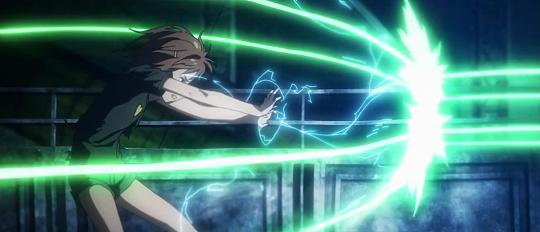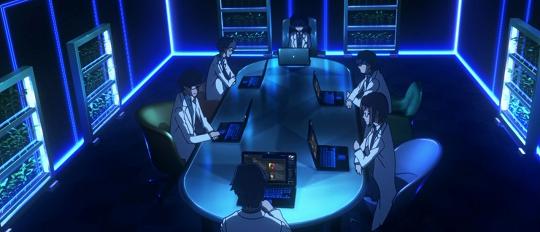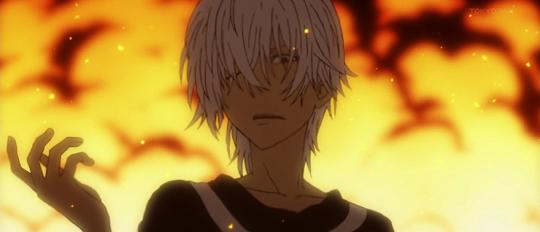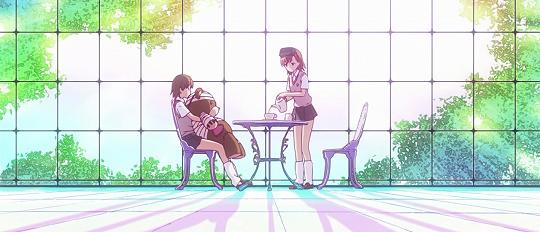First released: April 2013
Version reviewed: TV
For a series set in a near-future, science-driven city, the second season of A Certain Scientific Railgun (now with the “S” suffix) certainly paints a dim view of science and scientists. All of them barring the “good” one are shown as bespectacled loons with no regard for human life and a casual relationship with morals.
Academy City is lovingly rendered and plays host to the ongoing adventures of Mikasa Mikoto - the titular “railgun” - and her cohorts. Split roughly into two interlocking stories, the plot follows an experiment to advance a top level esper - those with varying X-Men like super powers - beyond anything seen before, and a spurned scientist’s attempts to demonstrate that even with their powers, espers are just as powerless as those without.
Following roughly on from the first series and as a companion piece to the ongoing A Certain Magical Index storyline, neither of those works are necessary to get up to speed with Railgun’s setup. Indeed even if you are familiar with them, much is left to the viewer to puzzle out or simply accept, especially when it comes to powers. It gets to the point when two girls surfing through the city on what looks like a puddle of water is met with as much fanfare as Mikoto being able to cling to walls like a gecko plugged into the mains.
It can be chaotic and a little bewildering but it follows an internal kind of logic much like the alchemy in Fullmetal Alchemist did; no one power is a panacea and there’s a rock-paper-scissors logic to most of the esper fights. When they do happen, and that’s rarely, they produce some outstanding set pieces replete with brinksmanship as to who can outlast, or at least out-think, their opponent. Unfortunately the majority of the scuffles are with robotic or otherwise non-human foes, a fact taken to ridiculous levels in the final city encompassing battle as increasingly large robots are launched, both figuratively and literally. They’re entertaining by any metric but feel like choreographed Dynasty Warriors battles - hundreds of weak enemies against one supercharged protagonist.
What they lack in peril though they make up for in visuals. Almost consistently well produced throughout, the animation is keen and detailed with effects like Mikoto’s electrical storms wonderfully played out. Lighting is an aesthetic strong point for the series with night scenes lovingly rendered and a full compliment of dawn and dusk shots rounding out the studio’s output. If there is anything to say about the visuals its that they are, for want of a better phrase, very “generic anime”. The cast are all well designed certainly but Academy City rarely feels like a character of its own and more like the type of Japanese city seen in so many other series, except with wind turbines. For a place that is supposedly like a terrestrial, science-led Rapture without the Ayn Rand foundation, the visual style lacks an identity beyond being pleasingly familiar.
This becomes an issue when the story calls for increasingly bleak situations - vicious deaths, clandestine meetings and nefarious villains supposedly lurk in the “darkness” of the city, but the bright and cheery colours of the constant sunny days never really lend this idea any kind of weight. Especially problematic is this when sneering antagonists are forgotten about or, as the final ne’er-do-well is, soliloquised into submission. Sixteen episodes of plot drift away on the breeze because the big bad, Accelerator, is punched a few times. His entire personality may be wrapped up with his position as the most powerful and it is with some relish that he is beaten - his haughty, cretinous attitude finally being given what is deserved. But it doesn’t change the fact that he and his entire support team drops out of the story entirely afterwards, despite the countless horrors they had visited upon people during his time.
This is nothing though in comparison to a sizeable first episode introduction of a blonde, mind controlling sociopath who is not even mentioned again - despite featuring in the opening - until twenty three episodes later. Likewise a revelation about one of Academy City’s core services falls by the wayside and never dealt with again. All of these come across like either fan-service for the light-novel or manga readers or setting the scene for possible future instalments in the franchise.
These are all surface imperfections though to a strong examination of the perils that come with having power. Mikoto has to deal with the isolation that comes from being one of the strongest espers in the city and the self-reliance that she feels others expect of her because of it. Her turning to her friends is twee and champions the Saturday-morning cartoon message of “we can do it if we work together!” but is underscored by her finding her place within the world and learning the limits of her abilities, both intellectual and magical. This contrasts with the STUDY group who wish to prove that those with powers are just as vulnerable as those without, by using Science™.
At every opportunity the series points out how flawed science is: esper powers can’t be cloned, created or tamed and in the end it is camaraderie and emotion that wins out. Every scientist shown is either laughing maniacally, incongruously calm or panicked - usually due to an esper. It’s an odd juxtaposition for a series that even has “Scientific” in its title but expands on the fundamental dichotomy of the espers, those with powers, and those without. Whereas the first season demonstrated the “Level 0”s as the oddities, here the playing field is levelled because it is not powers or science that wins, only humans.
A Certain Scientific Railgun S has its problems - unevenly weighted stories, extended screen time for the most annoying of personalities to name but two - however it is always entertaining, sometimes funny othertimes affecting, and it is pleasingly unpretentious about hiding away a large part of its thematic meat. A worthy successor to the first season and proves that, so far at least, Mikoto and crew haven’t yet outstayed their welcome.












